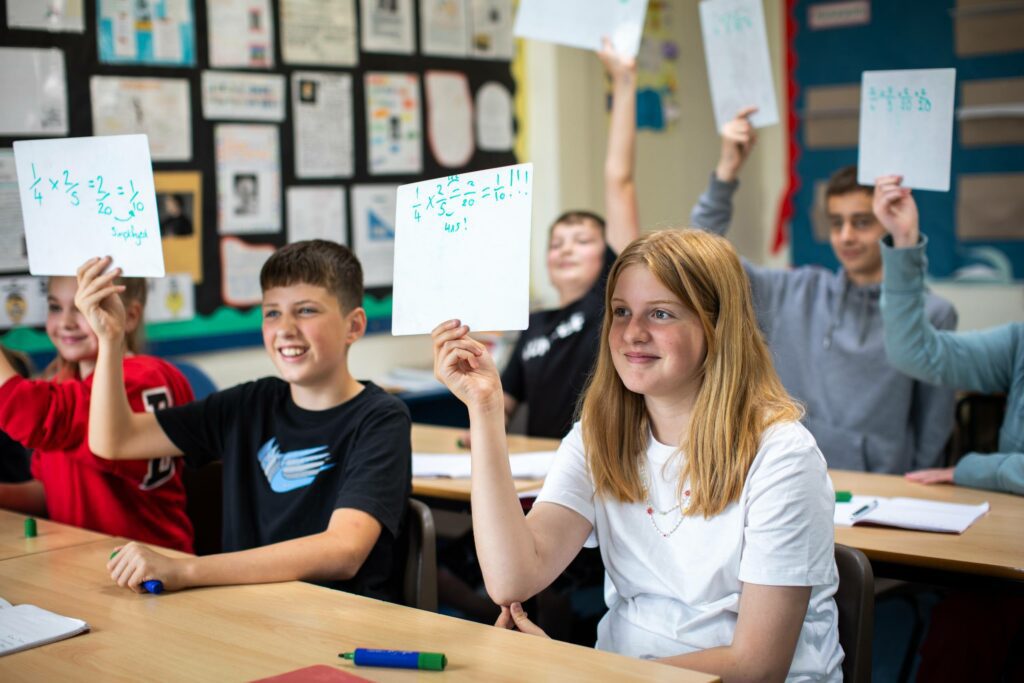About the Faculty
The Maths Faculty deliver a variety of courses at all Key Stages, developing knowledge and skills in mathematics. The faculty has dedicated teaching staff, inviting teaching spaces and are committed to delivering excellent learning for all students.
Years 7 to 9 – Key Stage 3
Students in Key Stage 3 are taught Mathematics in mixed-ability tutor groups with all students working towards the same objectives. They receive six one-hour long lessons per fortnight. A small number of students have targeted support in a much smaller class which runs parallel to the year group. This class is taught by a subject specialist and still follows the same scheme, however, the activities will be particularly targeted to met the needs of those students.
We expect students to come to Maths lessons fully-equipped with Mathematical equipment, including ruler, protractor and compasses. Students will need a scientific calculator. We reommend the Casio Classwiz fx-83GT. This is available to buy from the Maths Department and the School Library.
Students are given free access to MathsWatch and MyMaths. They may be set homework from these sites. In addition, they can be used for independent study to consolidate work completed in class. The usernames and password are available from your child’s Maths teacher.

